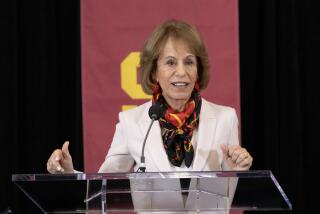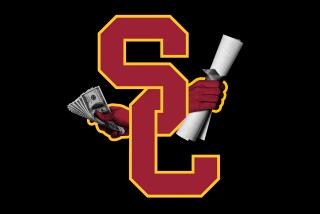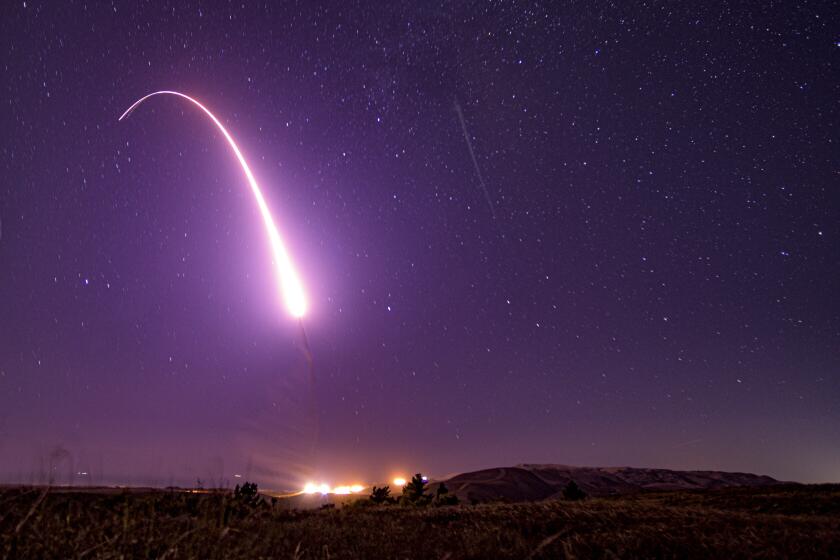$567 Million in Gifts Puts USC in Top Ranks of School Fund-Raisers
- Share via
With donations ranging from one penny to $26.5 million, USC has raised more than $567 million to build laboratories and classrooms, establish new research programs and boost scholarships, officials announced Thursday.
The university has exceeded by $10 million the goal it set in 1986 and is now in the top ranks of American higher education’s increasingly ambitious fund-raisers. Supporters hope the money will help push the school’s academic reputation into higher ranks as well.
“This money represents a very important opportunity for USC to have a real impact on the quality of life in Southern California and the whole nation and beyond,” USC President James H. Zumberge said at a campus briefing.
A recent gift of $3 million from Walter Annenberg, a former media magnate and U.S. ambassador to Great Britain, put the campaign over the top and brought his total donations to the drive to $26.5 million, by far the largest. Annenberg’s daughter, Wallis, is a USC trustee and money from the family in the 1970s founded the USC School for Communication that bears their name.
The campaign has received more money since reaching its goal and fund-raisers now expect a total of $600 million by June 30, the original deadline.
When the Campaign for the University of Southern California was announced in September, 1986, its $557 million goal was the largest of any American university. Because of higher costs, cuts in federal aid and escalating institutional ambitions, private universities like USC as well as public schools like UCLA are asking alumni, corporations and foundations for sums of money that would have been unthinkable a decade ago.
Since 1986, a few other universities have launched bigger drives, according to the Council for Aid to Education, a New York-based organization that researches such matters. Stanford University is expected to finish a $1.1-billion drive next year, the University of Pennsylvania is seeking $1 billion by 1994 and Johns Hopkins University recently raised $600 million. Boston University and New York University each are seeking about $1 billion by the century’s end.
Zumberge said the new funds paid for, among other things: 38 additional professors, 17 research funds, new scholarships and seven buildings plus plans for nine more. In addition, USC started new programs in neuroscience, molecular medicine and urban planning.
USC officials are puzzled over what was the smallest donation: a penny enclosed in an anonymous Christmas card along with a packet of flower seeds. The inscription said: “Vote Vegetarian.” The sender gave no indication of whether the penny was intended for research in botany or political science.
Roger Olson, USC’s senior vice president for university relations, said that about $467 million has been received and the remaining $100 million has been pledged but not yet collected. He estimated that USC will have spent about 8% of the anticipated $600 million--or $48 million--on fund-raising costs, such as salaries, parties and printing. The national average for such drives, he noted, is 15%.
George A. Brakeley III, president of Brakeley, John Price Jones Inc., the financial consulting firm that helped plan the USC campaign, said the university has a powerful in-house fund-raising staff and was helped by loyal alumni, well-regarded professional schools and the allure of a successful football team. “Football certainly doesn’t hurt,” Brakeley said from his Connecticut office. “It makes people feel better,”
More to Read
Sign up for Essential California
The most important California stories and recommendations in your inbox every morning.
You may occasionally receive promotional content from the Los Angeles Times.











